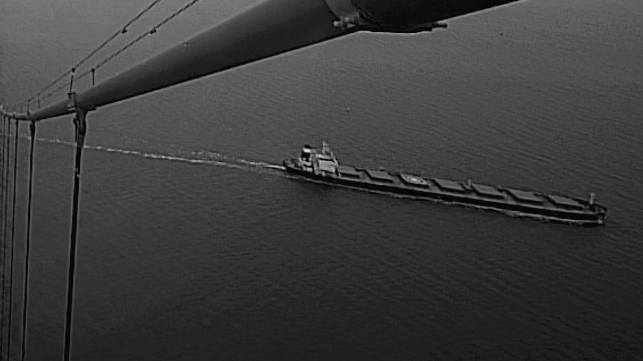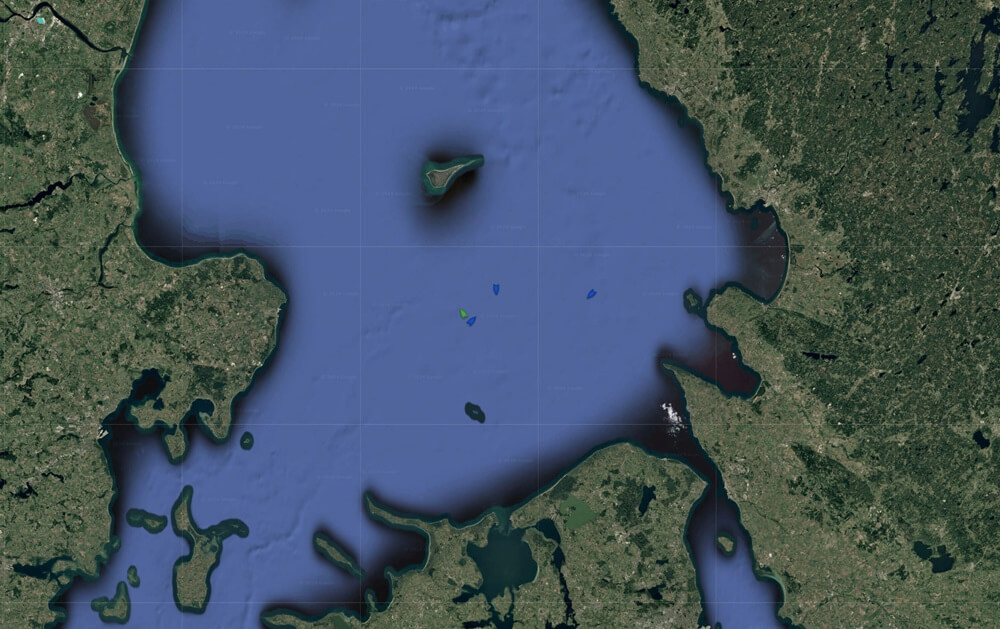China is Negotiating Over Access to Bulker Suspected of Subsea Sabotage

A legal standoff appears to have developed around the Chinese bulker Yi Peng 3, which is suspected of involvement in the severing of two subsea cables in the Baltic on Nov. 17-18. Based on AIS data, local authorities know that the bulker was maneuvering in suspicious locations when the cables were severed, and photos of the ship's bow show that one of its anchors is badly twisted - a rare type of damage that would require unusual forces. Despite circumstantial evidence, and the national-security implications of suspected sabotage, it appears that the coastal states have not yet boarded Yi Peng 3 for an inspection and are negotiating with China for permission.
The problem, according to Scandinavian legal experts, appears to be one of location. Yi Peng 3 is anchored just barely outside of Denmark's territorial seas, though inside the Danish exclusive economic zone. Unless there is evidence of a specific kind of environmental crime - like unlicensed fishing - Denmark lacks the legal authority to conduct an opposed boarding outside of the 12-mile line.
"If the ship is in the Danish economic zone, then it could just as well be in the middle of the Atlantic Ocean in relation to the specific case," maritime law expert Kristina Siig told DR.
Denmark could board if the vessel's flag state gave permission for a law enforcement investigation to proceed. However, the flag state in this case is China, and China has been negotiating the details of its cooperation with Denmark through "diplomatic contacts" for the past week, according to Swedish outlet SVT. "China has had smooth communication with all parties involved in the incident through diplomatic channels. Beyond that I have no further information to share regarding the Chinese vessel," Chinese foreign ministry spokeswoman Mao Ning said Monday.
Denmark's defense ministry has declined to comment on the Yi Peng's status, beyond noting that there are multiple assets on scene to monitor the ship. While the discussion continues, the bulker remains at anchor in the Kattegat.
"If China says no, and we do it anyway, we risk having to explain it in the Maritime Court in Hamburg, because the ship is in principle seen as a small piece of China," Siig said.
The cable breaks are being investigated as acts of potential sabotage, given recent tensions with Russia and a nearly-identical subsea cable incident involving a Chinese vessel last year.
On Tuesday, Swedish Prime Minister Ulf Kristersson told media that he would like to see the Yi Peng 3 relocated to Swedish waters, where at least one of the cable breaks occurred. This would address jurisdictional issues, since Sweden - not Denmark - was directly affected by the cable breaks.
"From the Swedish side, we have had contact with the ship and China and stated that we want the ship to move towards Swedish waters," he said.
Chinese Ship Suspected of Subsea Cable Sabotage Has a Twisted Anchor
A Chinese bulker happened to be maneuvering near two subsea cables at the time they were severed last weekend, and it appears to have a damaged anchor, according to Danish public radio outlet DR.
The bulker Yi Peng 3 was outbound from St. Petersburg in the Baltic during the timeframe of two back-to-back cable breaks on November 17-18. Its AIS record shows that it exhibited unusual course and speed changes at suspicious locations, attracting scrutiny from the authorities. "The ship has been near the two places at certain times when the incidents have taken place," police inspector Per Engstrom told SVT.
A Danish Navy patrol vessel intercepted and shadowed the Yi Peng 3 as it transited towards the Great Belt, and the bulker decided to interrupt its voyage to go to anchor in the Kattegat shortly after. Denmark stopped short of saying that the Yi Peng 3 had been detained, but a Danish patrol vessel has been monitoring it closely. Two other NATO vessels - German and Swedish - have joined to create a growing government flotilla near the Yi Peng 3.
Engstrom told SVT that the authorities would need evidence of a crime in Swedish waters to justify a detention or a boarding, and the available information does not yet rise to that standard.
"Everything points to the Chinese ship. It has slowed from 6.9 to 3.4 knots around the damaged cables and was in a Russian port before sailing out into the Baltic," former chief Danish defense intelligence analyst Jacob Kaarsbo told outlet TT over the weekend.

Yi Peng 3 (green) accompanied by the NATO government vessels HDMS Hvidbjoernen, Bad Deuben and Poseidon (blue) (Pole Star)
DR obtained a photo of the Yi Peng 3's port side anchor, and the news outlet showed the image to several maritime experts for their thoughts. The photo shows that the anchor's flukes are clearly twisted at the tips.
"They are twisted in different directions, which may very well indicate that one side of the anchor has become stuck in something down on the bottom or in some rocks," mariner Capt. Lars Bo Nielsen told DR. "I have never seen such a bent anchor before."
The last serious cable break in the Baltic was caused by the Chinese boxship NewNew Polar Bear, Chinese authorities confirmed earlier this year. Half of the Polar Bear's anchor was recovered near a ruptured gas pipeline between Finland and Estonia: it had been dragged for hundreds of miles, its stock had torn in two, and one fluke had broken off. An investigation into the NewNew Polar Bear incident is still under way, and investigators have not yet concluded whether the anchor damage was accidental or an act of sabotage.
This time, governments around the Baltic are working on the assumption that the cable damage was intentional. "No one believes that these cables were accidentally damaged. And I don't want to believe in the versions that anchors are to blame," said German Defense Minister Boris Pistorius last Tuesday. "So we have to conclude, without knowing who did that, that this is a hybrid action. And we also have to assume, without knowing, of course, that this is sabotage."
No comments:
Post a Comment